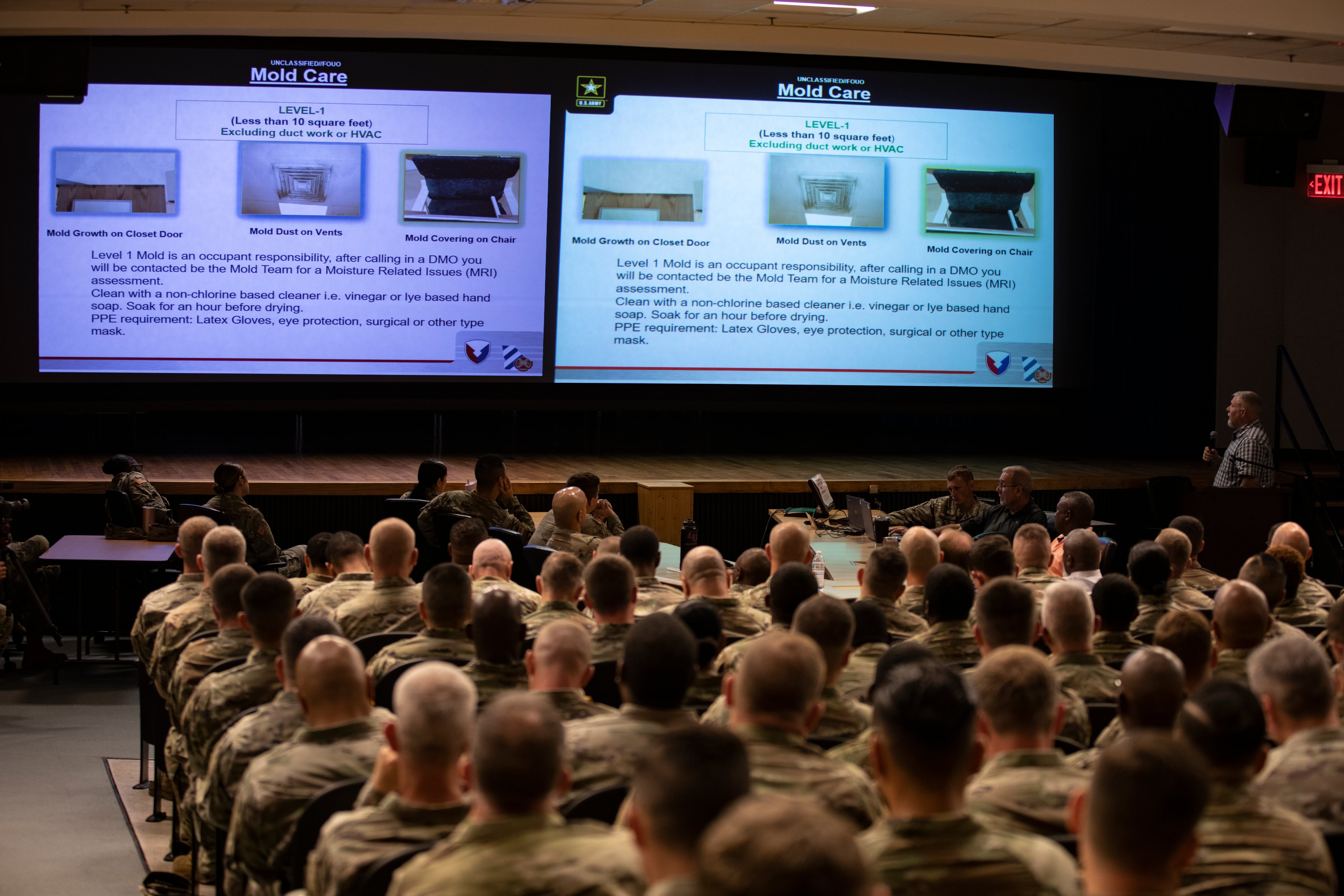Correction: This story was updated at 2:15 p.m. on Sept. 14, 2022. Previously, the story misstated the timeline to renovate older Army barracks. The error has been corrected.
Leaders at Fort Stewart and Hunter Army Airfield said Tuesday they are planning to increase barracks inspections with an eye toward mold, days after a video of mold-encrusted walls at the Georgia Army base circulated on social media.
The video — captioned “Fort stewart barracks,” followed by two presumably sarcastic thumbs-up emojis — depicts someone opening two closets to reveal walls covered in what appears to be black mold. U.S. Army WTF! Moments, which is popular among soldiers, posted the video to its more than 200,000 TikTok and Instagram followers last week.
“As soon as I saw those doors I knew where that was and what was going to happen next,” one Instagram user posted in the comments of the video.
“Good ole fort Stewart doing fort Stewart things,” another user commented. “Some things never change.”
The video seems to have sparked action at the installation. In a press release, the base said senior noncommissioned officers met Tuesday to discuss barracks conditions “following Soldiers voicing issues of mold to installation leaders and posting imagery of mold-filled rooms on social media platforms.”
Command Sgt. Maj. Quentin Fenderson — the senior enlisted leader for the 3rd Infantry Division, which is based at Fort Stewart — urged the base’s top NCOs to conduct more frequent barracks inspections.
“The question is, why are we not checking our soldiers’ rooms?” Fenderson told the enlisted leaders, according to the release. “We’ve got to be held accountable. We’re going to identify what we need to do. We’re going to fix it and we’re going to move forward. I’m going to walk through your barracks, I need you to do your jobs; I’m going to do mine.”
The announcement from Fort Stewart comes as Fort Bragg, an Army base in North Carolina, is relocating more than 1,100 soldiers out of barracks with mold or insufficient AC.
As at Fort Bragg, the barracks at Fort Stewart where leaders have confirmed most of the mold issues were built decades ago through Project Volunteer Army, or VOLAR, which sought to improve living conditions for the newly all-volunteer force.
Fort Stewart has 30 VOLAR barracks buildings, totaling more than 2,300 rooms, according to the installation news release. Built between 1977 and 1984, the barracks “do not meet the current standards established by the Army for private space and amenities,” the news release said.
The release pointed to “outdated HVAC systems and the high humidity in this region” as the culprits of the mold.
Some of the VOLAR barracks had already attracted the attention of base leadership.
One was renovated last year, according to the release. Renovations on four more are set to be complete in the next two years, Kevin Larson, a spokesperson for the installation, told Army Times. The remaining VOLAR barracks are scheduled to be renovated by the end of 2033, Larson told Army Times.
In its release, the installation encouraged soldiers to report mold to its Directorate of Public Works. Leaders intend to inspect barracks more frequently and ramp up reporting on mold, according to the release.
While Fort Bragg soldiers are being moved out of mold-infested barracks, that’s generally not the plan at Fort Stewart.
“In rare cases, unit leaders will temporarily move a Soldier to another barracks room for a few days while their room is properly cleaned and sanitized by the Directorate of Public Works,” Larson wrote in a statement to Army Times.
“I can tell you that mold is everywhere,” one Reddit user, who said he was a platoon leader and recently left a job at the base, wrote to Army Times. “It was in our mini split AC units at work. One of our guys would spray bleach into them. DPW would come by and ‘clean’ them but they didn’t do a thing really.”
Irene Loewenson is a staff reporter for Marine Corps Times. She joined Military Times as an editorial fellow in August 2022. She is a graduate of Williams College, where she was the editor-in-chief of the student newspaper.




